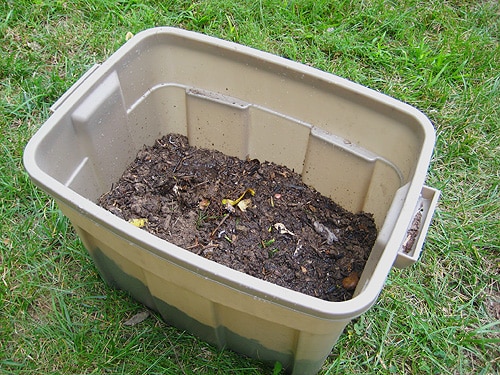Start Composting: Easy Steps for Beginners

Imagine transforming your kitchen scraps and yard waste into a rich, nutrient-dense soil amendment that your plants will love. Composting is like alchemy for gardeners, turning organic waste into black gold. But where do you start? This step-by-step guide to starting a compost bin will demystify the process, making it easy and fun for beginners to dive into the world of eco-friendly gardening.
Why Start Composting?
Before we dive into the how, let's explore the why. Composting is an excellent way to reduce your carbon footprint while creating a powerful fertilizer for your garden. According to the Environmental Protection Agency, composting can significantly reduce the amount of organic waste sent to landfills, lowering methane emissions and helping the environment.
Composting Basics: Understanding the Process
Composting is a natural process where organic materials decompose into a nutrient-rich substance called humus. This is achieved through the work of microorganisms, bacteria, and fungi that break down the organic matter. The key to successful composting lies in balancing the right ingredients and conditions.
Ingredients for Successful Composting
To create a healthy compost pile, you need a balance of "greens" and "browns." Greens are nitrogen-rich materials like fruit and vegetable scraps, coffee grounds, and grass clippings. Browns are carbon-rich materials such as dead leaves, straw, and shredded paper. Aim for a ratio of about 3:1 browns to greens.
Setting Up Your Compost Bin
Choosing the Right Bin
The first step in your composting journey is selecting the right compost bin. There are various types available, from simple wire bins to tumblers and worm composters. Consider your space and needs when making your choice. For beginners, a simple plastic bin with a lid is a great starting point.
Location Matters
Place your compost bin in a shady spot with good drainage. Avoid placing it too close to your house or in direct sunlight, as this can cause unpleasant odors and accelerate the decomposition process too quickly.
Layering Your Compost
Start by laying a base of browns at the bottom of your bin. This layer helps with aeration and drainage. Next, add a layer of greens, followed by another layer of browns. Continue this pattern, ensuring each layer is about 4-6 inches thick.

Compost Bin Setup: Tips and Tricks
Adding Water
Your compost pile should be as moist as a wrung-out sponge. Too much water can lead to a smelly, soggy mess, while too little can slow down the decomposition process. Sprinkle water on your compost as needed, but avoid overwatering.
Turning the Pile
Regularly turning your compost pile introduces oxygen, which is essential for the microorganisms to do their job. Use a pitchfork or shovel to mix the contents of your bin every week or two. This helps distribute the heat and speeds up the composting process.
Compost Maintenance: Keeping It Healthy
Monitoring Temperature
A healthy compost pile should reach temperatures between 130°F and 160°F. This heat helps kill weed seeds and disease-causing organisms. You can use a compost thermometer to monitor the temperature. If your pile isn't heating up, it might need more greens or better aeration.
Dealing with Pests
Compost piles can attract pests like rodents and flies. To deter them, make sure your bin has a secure lid and avoid adding meat, dairy, or oily foods. If you notice an infestation, consider adding a layer of hardware cloth or wire mesh to the bottom of your bin.
Harvesting Your Compost
After about 3-6 months, your compost should be ready to use. It will look like dark, crumbly soil and have a pleasant, earthy smell. Sift out any large, uncomposted materials and add them back to your bin. Your finished compost can be used as a soil amendment, mulch, or fertilizer for your garden.

Eco-Friendly Gardening: The Benefits of Composting
Composting not only reduces waste but also improves soil structure, retains moisture, and provides essential nutrients for your plants. It's a win-win for both your garden and the environment. By embracing composting, you're taking a significant step towards sustainable living.
Conclusion: Embrace the Magic of Composting
Composting is a rewarding and eco-friendly practice that turns organic waste into a valuable resource. By following these easy steps, you can start your own compost bin and reap the benefits of rich, nutrient-dense soil for your garden. So, why wait? Dive into the world of composting and watch your garden thrive.
FAQs
1. What can I compost?
You can compost a variety of organic materials, including fruit and vegetable scraps, coffee grounds, eggshells, yard waste, and shredded paper. Avoid adding meat, dairy, oily foods, and diseased plant materials.
2. How long does it take to make compost?
The time it takes to make compost varies depending on the conditions and materials used. Generally, it takes about 3-6 months for a compost pile to fully decompose.
3. Can I compost in the winter?
Yes, you can compost in the winter, but the process will slow down due to the colder temperatures. Insulating your bin with straw or leaves can help maintain some heat.
4. What do I do if my compost smells bad?
If your compost smells bad, it might be too wet or have too many greens. Add more browns and turn the pile to introduce oxygen. This should help reduce the odor.
5. How do I know when my compost is ready?
Your compost is ready when it looks like dark, crumbly soil and has a pleasant, earthy smell. It should be cool to the touch and have no recognizable pieces of organic material left.
0 Response to "Start Composting: Easy Steps for Beginners"
Post a Comment